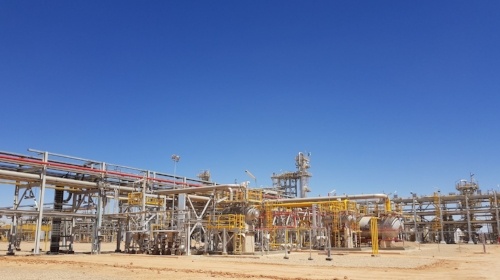4 min read
Sovereign Oil & Gas Hedging - A Different Perspective
How Do Sovereign Energy Companies Influence Commodity Markets and Expectations? Petróleos Mexicanos (Pemex) makes headlines about once per year...
6 min read
Mercatus Energy : Jul 18,2016

The need for effective hedging and marketing is greater in the current price environment i.e. $50/BBL than it is in a higher price environment i.e. $100/BBL. Indeed, high prices can mask the consequences of poor commodity price risk management. At $50/BBL, oil and gas producers are greatly exposed to price volatility. Every $1 change in the price of oil is felt more intensely at these levels because margins are quite thin, many producers’ credit facilities are maxed out and lenders are nervous. Most producers are conflicted: they face real risk of lower prices, but they fear missing out on higher prices, and they have limited hedging budgets. Budgets are squeezed, but price risk remains present.
So what is a producer to do? We can draw on recent trading activity among large speculative funds to answers to this question.
Speculative trading desks such as commodity hedge funds regularly buy out-of-the-money (OTM) options. Market observers often mistake these purchases for price forecasts, though few buyers of deep OTM options anticipate that the options will expire in-the-money. For example, a recent Bloomberg article mentioned several large purchases of $100 WTI calls with 12 and 24 month expiration dates. The article concluded that these funds were signaling expectations of $100 or higher WTI during the next 24 months. To understand why this isn’t necessarily true, and to demonstrate how a producer can employ a similar strategy, one must first understand the variables which determine the price of a commodity option.
Option premium is a function of four variables: time value, intrinsic value, volatility, and interest rates. A market maker considers these variables in his or her effort to answer the question, “How much must I charge today to accept the risk of this option contract being in-the-money (ITM) at or before expiration?”
As long as time remains until the expiration of an option contract, the option has positive time value. With each passing day, the value assigned to an option from time falls, or “decays.” This rate of decay is captured by what is known in the trading world as theta. Theta behaves differently depending on the option’s strike relative to the price of the underlying swap or commodity. At-the-money (ATM) options tend to demonstrate the greatest theta; OTM options tend to decay more slowly. This is an important aspect with respect to hedging with OTM options. As previously mentioned, buyers of deep OTM options may never intend for the optionn to expire ITM or anticipate being able to be able to exercise the option. A hedger that purchases deep OTM options is more likely to sell the options prior to expiration, in order to capture gains, than to exercise the options. In this case, the hedger benefits from low theta, or more slowly decaying time value.
Intrinsic value is determined by the strike price relative to the price of the underlying commodity. It has no upper bound, but cannot be less than zero. A put option’s intrinsic value at expiration = max (0, strike price – price of underlying). A call option’s intrinsic value at expiration = max (0, price of the underlying – strike price). Until expiration, a market maker must estimate the potential for the option to expire with positive intrinsic value. He or she will assign greater value to options that are ATM or near-the-money (NTM) because they present a greater probability to expire ITM and to be exercised. Deep OTM options have very little, if any, intrinsic value, which translates into the options contract having a lower premium relative to an ATM or NTM option. It’s possible for deep OTM options to offer more bang for your buck than an ATM or NTM option. As a result, a hedger can purchase deep OTM options within his budget in greater volume than ATM or NTM options. The relatively low premium effectively allows the hedger to leverage available cash flow to get more bang for the buck.
Intrinsic value is often over simplified because people try to extend assumptions of intrinsic value that apply at expiration to periods prior to expiration. To avoid this error, one should be aware of how option premiums change relative to changes in the price of the underlying commodity, a calculation known as delta. Delta ranges from -100 to 100. Long put options have deltas that range from -100 to 0 and long call options have deltas that range from 0 to 100. Deep ITM options’ deltas approach either extreme (-100 for long puts, 100 for long calls) and ATM options tend to have delta near 50 (long calls) or -50 (long puts). Deep OTM options tend to have deltas that approach 0. At 100, there is a 1:1 ratio of change in premium to change the price of the underlying. At -100, the opposite is true. At 0, there is no change in premium when the price of the underlying changes. To demonstrate, a long WTI put option that is ATM might have a delta of -50. If the price of WTI rises $1.00, the premium of the put will fall by $0.50, all else being equal. Importantly, delta is additive. If 1 long ATM put option has a delta of -50, then 2 have a combined delta of -100. Combined with the low premium OTM options have relative to ATM, a hedger can construct a portfolio of options that reflects his or her exposure because of this additive property.
As with the primary inputs to option premium, delta is fluid, making portfolio analysis incomplete without some measurement of delta’s rate of change relative to the underlying commodity. Gamma is the rate at which an option’s delta changes for a given change in price of the underlying commodity. It is an estimate of how much like the underlying commodity an option acts; the directional risk of an options contract. As such, gamma is always positive for long options, puts or calls. Consider the ATM WTI put with a delta of -50, assume it has a gamma of 5. If the underlying contract appreciates by $1.00, the delta will rise to -45, all else held equal. As gamma becomes more negative or positive, it suggests greater impact changes in the underlying commodity price have on a portfolio. Gamma peaks when an option’s strike is ATM and, like delta, approaches zero when an option is deep OTM.
Volatility is the most important and least understood component of options premium. It is the only variable which is unknown. Historical, or realized, volatility can be measured. Historical volatility is measured by the standard deviation of the price of the underlying commodity over some time period – month, quarter, year, etc. It is an incomplete view of volatility; on its own tells us very little about the value of an options contract. More important to the estimate of premium is implied volatility. This is the number market makers input into their pricing models to calculate option premium prices. Implied volatility is the market maker’s estimate of forward volatility at the time of execution. It is calculated by solving for volatility based on the premium price of the option. In other words, it is the volatility implied by a given option premium price. Greater volatility leads to higher options premium prices because greater uncertainty is assumed in the calculation, so the market maker must price in greater risk of the option being ITM at or before expiration. Though realized and implied volatility tend to be positively correlated, they have a tendency to change at different rates or times. It is not uncommon for implied volatility to be significantly higher or lower than realized volatility in commodities markets. All long options, puts and calls, demonstrate this characteristic. An OTM option’s premium will gain or lose more value in percentage terms for a given change of volatility than an ATM option. This is critical when considering deep OTM options buying. This characteristic is exaggerated with time. Longer duration means greater sensitivity to volatility.
Interest rates are also one of the variables which determines the price of an option, although less so than time, intrinsic value, and volatility. Interest rates determine the of an option as they represent the potential return that could be produced if the funds used to purchase for an option were invested in an a "risk-free" instrument such as a US Treasury bill.
In practice, when market makers select the interest rate utilized to determine the price of an option, they generally use a "market accepted" benchmark interest rate for the respective tenor of the option. As an example, if you wanted to determine the appropriate interest rate for an option which expires in one year, you might choose to use the current rate for one year LIBOR.
For those of you interested in the more mathematical aspects of option prices, rho is the "Greek" variable associated with interest rates. Rho measures the sensitivity of an option's value to a change in interest rates. As an example, if an option has a rho -10, then for every percentage-point increase in interest rates, the value of the option decreases by 10%.
Deep OTM options offer benefits to a budget-constrained hedger as they are relatively cheap which allows for larger volumes to be purchased for a given budget. Because of how the value of a deep OTM option reacts to changing market conditions, deep OTM options can offer more bang for the buck than an ATM option, particularly when the hedger purchase a large volume of options. Comparative resistance to time decay, additive properties of delta, and heightened sensitivity to changes in volatility give the hedger the opportunity to hedge larger volumes even with a constrained budget. These characteristics allow the hedger to use options to mitigate risk without necessarily giving up the potential for margin expansion when price rise (producers) or fall (consumers).
Hedging with deep OTM options can and often does require significant work in order for the strategy to produce positive results. Remember, a hedger who hedges with deep OTM options, employs the strategy knowing that the option is unlike to trade or expire ITM. He is depending on capturing the benefits of deep OTM options based on changing market conditions. Having a clear strategy for capturing the potential benefits is imperative, which generally means that hedging with deep OTM options is not a “set-it-and-forget it” hedging strategy.
4 min read
How Do Sovereign Energy Companies Influence Commodity Markets and Expectations? Petróleos Mexicanos (Pemex) makes headlines about once per year...

3 min read
Financial derivatives do not always provide satisfactory risk mitigation. Your risk profile may be more deeply exposed to risks beyond commodity...

4 min read
This post is the first in a series where we explore the most common strategies utilized by market participants – in these examples we will focus on...